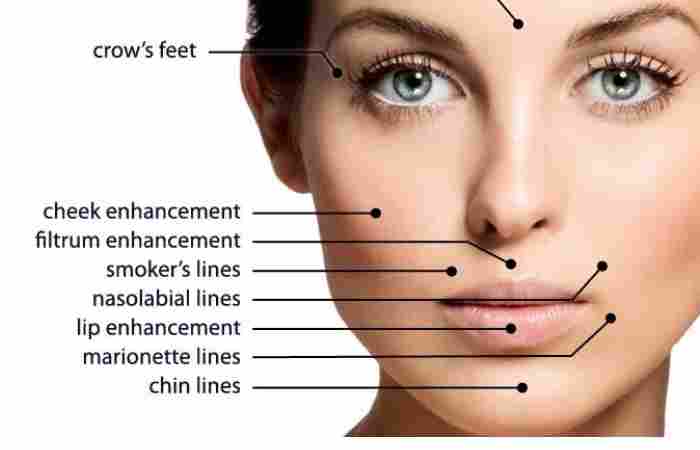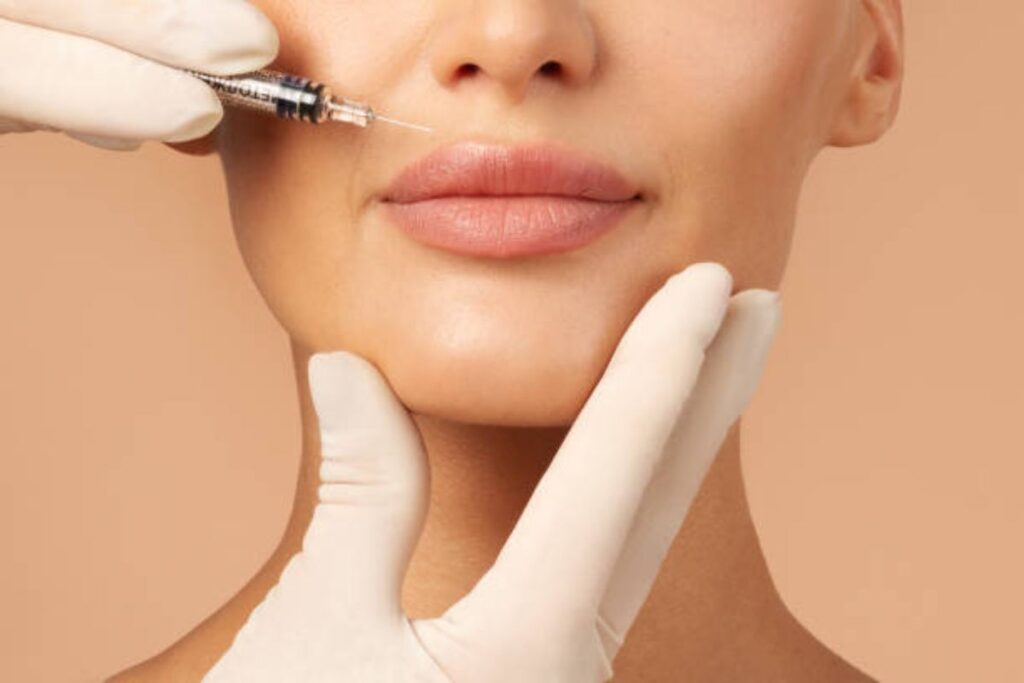When you hear the word fillers, you probably think of plump lips or smooth, youthful skin. But what exactly are fillers, and how do they work? Let’s break down everything you need to know — from the different types of fillers to their benefits, risks, and what to expect before and after treatment.
What Are Fillers?

Fillers, also known as dermal fillers or cosmetic injectables, are gel-like substances injected under the skin to restore volume, smooth wrinkles, and enhance facial contours.
They’re one of the most popular non-surgical cosmetic treatments worldwide — loved for their quick results and minimal downtime.
How Do Fillers Work?
Fillers work by adding volume beneath the skin’s surface. As we age, the skin loses collagen, fat, and elasticity, which leads to sagging, fine lines, and wrinkles. Injecting fillers helps:
-
Plump up hollow areas like cheeks and temples
-
Smooth out deep wrinkles (like smile lines)
-
Add definition to lips and jawlines
-
Rejuvenate the overall facial appearance
Most fillers contain ingredients that mimic substances naturally found in the body, making them safe and effective when used correctly.
Types of Fillers
There isn’t just one kind of filler — different types serve different purposes. Here are the main categories:
1. Hyaluronic Acid (HA) Fillers
These are the most common and widely used fillers. Hyaluronic acid is a substance your body naturally produces to retain moisture and volume.
Popular brands: Juvederm, Restylane, Belotero
Best for:
-
Lips
-
Cheeks
-
Nasolabial folds (smile lines)
-
Under-eye area
Pros:
-
Natural-looking results
-
Can be dissolved if needed
-
Hydrates the skin
Cons:
-
Temporary (lasts 6–18 months)
2. Calcium Hydroxylapatite (CaHA) Fillers
Made from a substance found in bones, CaHA fillers are thicker than HA and stimulate collagen production.
Popular brand: Radiesse
Best for:
-
Deep wrinkles
-
Jawline contouring
-
Cheek enhancement
Pros:
-
Long-lasting (up to 18 months)
-
Boosts natural collagen production
Cons:
-
Not ideal for lips or fine lines
3. Poly-L-Lactic Acid Fillers
These are known as biostimulatory fillers — they don’t just add volume instantly but help your body gradually produce collagen.
Popular brand: Sculptra
Best for:
-
Facial volume loss
-
Hollow cheeks
-
Overall skin rejuvenation
Pros:
-
Natural results that improve over time
-
Long-lasting (up to 2 years)
Cons:
-
Multiple sessions needed for full results
4. Polymethylmethacrylate (PMMA) Fillers
A semi-permanent filler that uses tiny microspheres suspended in collagen gel.
Popular brand: Bellafill
Best for:
-
Deep wrinkles
-
Acne scars
Pros:
-
Long-term results (up to 5 years)
-
Strong support structure under skin
Cons:
-
Harder to remove if complications occur
Areas Commonly Treated with Fillers
Here’s where fillers can make the most noticeable difference:
-
Lips: For volume, shape, and definition
-
Cheeks: To restore youthful fullness
-
Jawline & Chin: For a more sculpted look
-
Under Eyes: To reduce hollows and dark circles
-
Smile Lines (Nasolabial folds): To soften deep creases
-
Hands: To smooth wrinkles and add volume
Benefits of Dermal Fillers
Here’s why people love them:
-
Instant results: You’ll notice a difference immediately after treatment.
-
Non-surgical: No anesthesia, no downtime.
-
Customizable: Fillers can be tailored to your specific facial needs.
-
Boosts confidence: Enhances natural beauty without changing your identity.
-
Stimulates collagen: Some fillers improve skin quality over time.
What to Expect Before and After Filler Treatment
Before Treatment
Your provider will:
-
Examine your face structure and discuss goals
-
Review your medical history
-
Recommend the right filler type and amount
-
Advise avoiding alcohol, aspirin, or blood thinners a few days before treatment
During Treatment
-
A numbing cream or local anesthesia may be applied
-
The filler is injected using a fine needle or cannula
-
The process usually takes 15–30 minutes
After Treatment
-
Mild swelling, redness, or bruising may occur
-
Avoid touching or massaging the area
-
Skip workouts or saunas for 24–48 hours
-
Full results appear within a week or two
How Long Do Fillers Last?
The longevity of fillers depends on:
-
The type of filler used
-
The area treated
-
Your metabolism and lifestyle
On average:
-
Hyaluronic Acid fillers: 6–18 months
-
CaHA fillers: 12–18 months
-
Poly-L-Lactic Acid fillers: up to 2 years
-
PMMA fillers: up to 5 years
Touch-up treatments help maintain results over time.
Are Fillers Safe?
When performed by a qualified professional, fillers are generally safe. However, like any cosmetic procedure, there are risks.
Possible Side Effects
-
Swelling and bruising
-
Lumps or bumps
-
Redness or tenderness
-
Rarely, infection or allergic reaction
To minimize risks, always choose a board-certified dermatologist or aesthetic injector with good reviews and proper credentials.
How Much Do Fillers Cost?

Filler prices vary depending on the product, clinic, and country.
On average:
-
Hyaluronic acid fillers: $500–$800 per syringe
-
CaHA or Sculptra: $700–$1,000 per session
-
PMMA fillers: $900–$1,500
Most people need 1–2 syringes per area, but your provider will recommend the ideal amount during consultation.
Filler vs. Botox: What’s the Difference?
Many people confuse Botox with fillers, but they serve different purposes.
| Feature | Fillers | Botox |
|---|---|---|
| Purpose | Adds volume, plumps, and smooths | Relaxes muscles to reduce wrinkles |
| Results | Instant | Takes a few days |
| Duration | 6 months – 2 years | 3–6 months |
| Ideal for | Deep lines, hollows, lips | Expression lines (forehead, crow’s feet) |
For the best anti-aging results, some people combine both treatments.
Tips for Choosing the Right Filler and Injector
-
Research the brand: Stick to FDA-approved fillers.
-
Ask for credentials: Choose an experienced provider.
-
Avoid deals that sound too good: Cheap fillers can be dangerous.
-
Discuss your goals clearly: Bring reference photos if needed.
-
Start small: You can always add more later.
Myths About Fillers (Debunked)
Let’s bust a few common myths:
-
“Fillers make you look fake.”
→ Not true — when done correctly, fillers look natural and subtle. -
“Once you start, you can’t stop.”
→ You can always stop; your skin will gradually return to normal. -
“Fillers are only for older people.”
→ Many people in their 20s use fillers preventatively to maintain youthfulness.
Final Thoughts on Fillers
Whether you want fuller lips, smoother skin, or a more defined jawline, fillers can offer a natural, confidence-boosting enhancement — without surgery or long recovery times.

